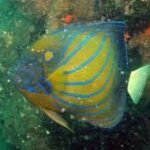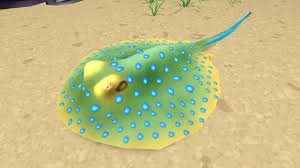
Dragons, as powerful and mystical creatures, are one of the most significant and revered symbols in Chinese folklore. Unlike the fearsome, fire-breathing dragons of Western mythology, Chinese dragons are generally viewed as benevolent beings, associated with power, prosperity, and harmony with nature. These creatures are often featured in ancient myths, folktales, and religious texts, where they embody a connection between the heavens, the earth, and the waters. In Chinese culture, dragons come in various forms, each with distinct characteristics and roles. This article will explore the different types of dragons found in Chinese folktales, examining their unique attributes, symbolism, and the stories they appear in.
The Four Dragon Kings: Guardians of the Four Seas
One of the most important and commonly known groups of dragons in Chinese folklore are the Four Dragon Kings. These dragons rule over the four seas of China, each one governing a different direction. The Four Dragon Kings are highly revered in Chinese mythology and have a significant role in various folktales, especially those associated with water and the seasons.
- East Sea Dragon King (Ao Guang): The East Sea Dragon King, Ao Guang, is the most famous of the Four Dragon Kings. He is said to rule over the East Sea and is often depicted as a large, fearsome dragon who can summon storms and control the tides. In some stories, Ao Guang is portrayed as a protector of the oceans and the creatures that dwell within them. He appears in the classic Chinese novel Journey to the West, where he is involved in a conflict with the hero, the Monkey King, Sun Wukong. Ao Guang’s role in these stories highlights his power and the complex relationship between dragons and humans in Chinese folklore.
- South Sea Dragon King (Ao Run): The South Sea Dragon King, Ao Run, is another member of the Four Dragon Kings who governs the southern seas. In folktales, he is often depicted as a wise and noble creature who provides aid to those in need, such as when he offers protection to sailors and fishermen. Like the other Dragon Kings, Ao Run has the ability to control the weather and is often called upon to bring rain to dry lands or to calm storms. His character represents the balance between nature and human activity, with dragons often seen as mediators between the mortal realm and the divine forces of the universe.
- West Sea Dragon King (Ao Ming): The West Sea Dragon King, Ao Ming, is the ruler of the Western Sea. Known for his wisdom and strength, Ao Ming’s role is also closely tied to the element of water. In various Chinese myths, he is portrayed as a helpful figure who provides water to areas suffering from droughts, and he works alongside other dragons to maintain the balance of nature. His stories often highlight themes of cooperation and harmony with the natural world, a recurring motif in Chinese mythology.
- North Sea Dragon King (Ao Shun): Ao Shun, the North Sea Dragon King, rules the northern seas. Like his counterparts, he is an ancient and powerful being with dominion over water and weather. Ao Shun’s tales often focus on his ability to control vast oceanic expanses, and his influence extends to the other elements of nature, such as wind and rain. He is often depicted as a figure of immense wisdom and a key protector of the seas, ensuring that balance is maintained between the mortal world and the supernatural realm.
Each of the Four Dragon Kings plays a significant role in maintaining the cosmic balance between land, water, and sky. Their influence over natural forces, such as weather and the tides, makes them vital characters in Chinese folklore, representing the harmony between human civilization and the natural world.
The Celestial Dragon: Guardian of Heaven
In Chinese mythology, the Celestial Dragon, also known as the Tianlong (天龙), is a powerful and celestial being that guards the heavens. Unlike the Four Dragon Kings, who rule over the seas, the Celestial Dragon is associated with the sky and the realm of the gods. The Tianlong is often depicted as a majestic, serpent-like dragon with a long, flowing body covered in shimmering scales. Its role is primarily as a protector of divine order and harmony in the heavens.
The Celestial Dragon is often seen as a divine creature who serves as the steed or guardian of the gods, particularly the Jade Emperor (the supreme god in Taoist mythology). In many folktales, the Tianlong is tasked with ensuring that the cosmic order is upheld, preventing chaos from disrupting the celestial realm. This dragon often appears in stories where the gods must intervene in the mortal world to restore balance, and the Tianlong serves as their trusted companion and ally.
The Celestial Dragon’s connection to the heavens symbolizes its association with divine power, immortality, and the celestial mandate. It is considered a protector of the divine realm, a being of extraordinary power that ensures that cosmic forces remain in balance. Its image in Chinese art, literature, and folklore often embodies the virtues of wisdom, righteousness, and the benevolent rule of the gods.
The Black Dragon: Symbol of Darkness and Mystery
The Black Dragon, also known as the Heilong (黑龙), appears in several Chinese folktales, often as a figure of mystery and power. This dragon is typically depicted as a dark, ominous creature, sometimes with black scales and red eyes, representing the forces of darkness or chaos. While most dragons in Chinese folklore are associated with positive traits such as benevolence, the Black Dragon is more ambiguous and can sometimes represent adversity, danger, or even malevolent forces.
In some folktales, the Black Dragon is said to be a creature of the underworld, ruling over dark waters or hidden realms. Its appearance in these stories is often associated with trials and tribulations that the protagonist must face and overcome. For example, the Black Dragon might be an antagonist that needs to be defeated or tamed in order to restore order and balance to the world.
Despite its dark nature, the Black Dragon is not necessarily evil in Chinese folklore. Instead, it represents the complexity of life, where darkness and light coexist. In some stories, the Black Dragon is ultimately defeated, but it can also be transformed or redeemed, showing that even the most fearsome creatures have the potential for change.
The Coiling Dragon: The Dragon of Time and Transformation
The Coiling Dragon, known as the Guanlong (管龙), is another notable dragon in Chinese mythology, symbolizing time, transformation, and cyclical change. The Guanlong is often depicted as a dragon whose body coils around itself in a spiral, representing the cyclical nature of time and the flow of life.
In Chinese folklore, the Coiling Dragon is believed to embody the concept of yin and yang—the balance of opposing forces. Its spiral form is a metaphor for the interconnectedness of life, death, and rebirth. The dragon’s movement is often linked to the passage of time, marking the changing seasons and the cycles of nature. The Guanlong appears in various stories related to growth, change, and the eternal flow of time.
One of the most prominent features of the Coiling Dragon is its association with transformation. In some myths, it is said that the Coiling Dragon can help guide a character through personal or spiritual growth. By navigating the winding path of the dragon’s body, the protagonist undergoes a process of transformation, gaining wisdom, maturity, or enlightenment.
The Dragon Horse: A Hybrid of Dragon and Horse
A lesser-known but equally fascinating creature in Chinese mythology is the Dragon Horse, or Longma (龙马). This hybrid creature combines the traits of a dragon and a horse, symbolizing strength, speed, and intelligence. The Dragon Horse is often depicted as a horse with a dragon’s head, serpentine body, and sometimes dragon-like scales.
In Chinese folklore, the Dragon Horse is associated with great feats of strength and is considered an omen of prosperity and success. It is often linked to stories of great warriors or rulers, signifying their victory in battle or their ability to lead the people. The Dragon Horse can also represent a bridge between the human world and the divine, as it combines the earthly attributes of the horse with the celestial power of the dragon.
One famous tale featuring the Dragon Horse is the story of the legendary Emperor Xuanyuan (Yellow Emperor), who is said to have ridden a Dragon Horse during his conquest to unite the tribes of China. The Dragon Horse thus embodies the ideal qualities of leadership, victory, and divine favor.
Conclusion: The Enduring Legacy of Chinese Dragons
The diversity of dragons in Chinese folktales illustrates the complexity and richness of Chinese mythology. Each dragon species serves as a symbol of different aspects of life, from the guardianship of natural forces to the embodiment of time, transformation, and divine power. Whether as rulers of the seas, celestial protectors, or mystical creatures of darkness, dragons remain integral to Chinese culture, embodying a deep connection between the human realm and the supernatural.
Through these mythical creatures, Chinese folktales reflect the importance of balance, wisdom, and harmony in both the natural world and human society. The dragons of Chinese mythology continue to captivate the imagination of people around the world, representing both the awe-inspiring power of nature and the divine forces that govern the universe.






